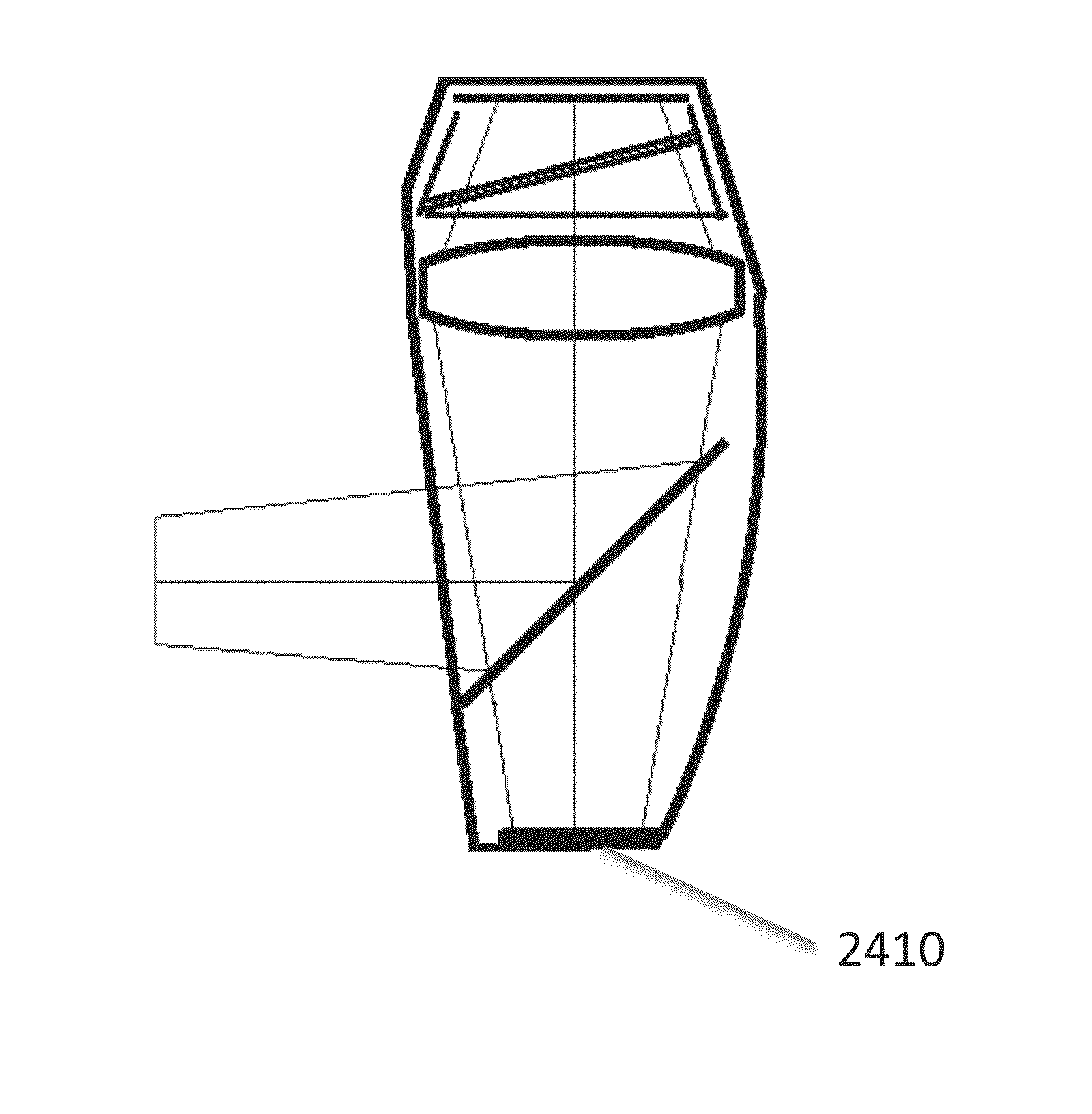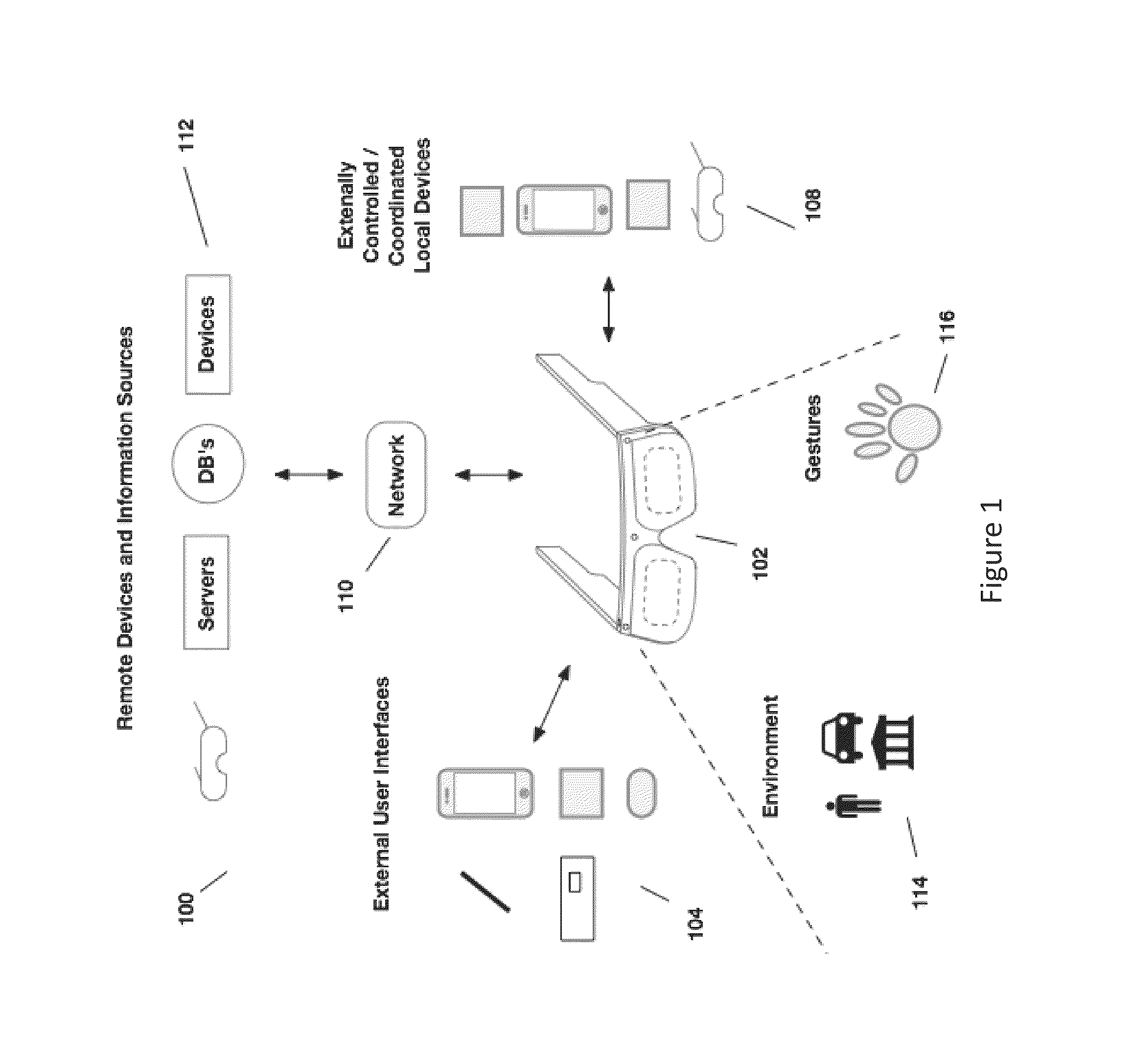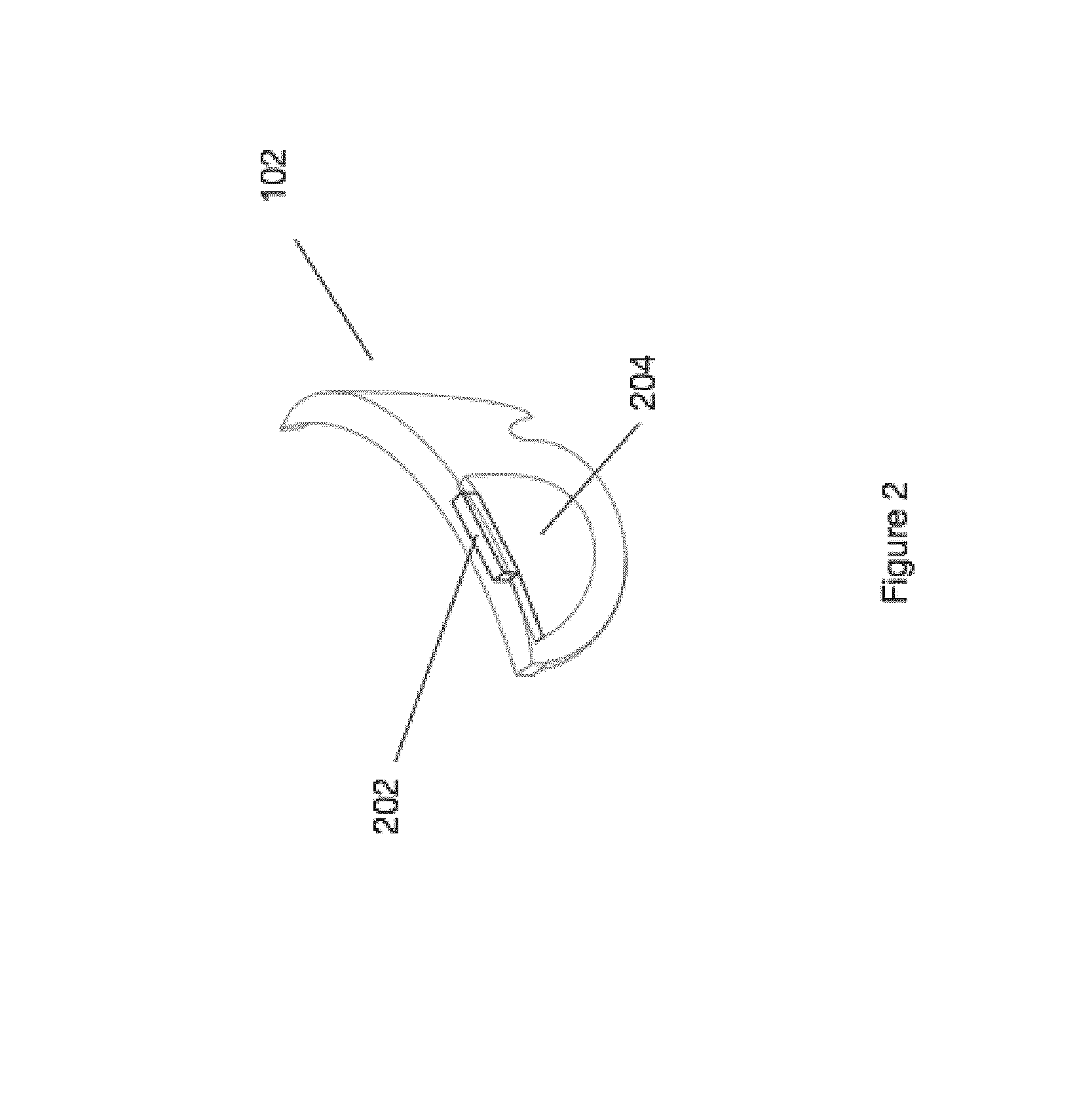See-through computer display systems
- Summary
- Abstract
- Description
- Claims
- Application Information
AI Technical Summary
Benefits of technology
Problems solved by technology
Method used
Image
Examples
example 1
[0527]For a 26 deg display field of view and a 1280 pixel horizontally wide image, a pixel occupies 0.020 deg within the display field of view. If the frame rate of the full color images is 60 Hz, with three color sequential subframes images, the subframe time is 0.006 sec. The rotational speed of the head mounted display needed to produce one pixel of color breakup is then 3.6 deg / sec. If the number of horizontal pixels in the display field of view is reduced to 640 pixels and simultaneously the frame rate of the full color images is increased to 120 Hz, with three color sequential subframes images, the subframe time is reduced to 0.003, the size of a pixel is increased to 0.041 deg and the rotational speed to produce one pixel of color breakup is 14.6 deg / sec.
example 2
[0528]For a 26 deg display field of view and a 1280 pixel horizontally wide image, a pixel is 0.020 deg within the display field of view. If the smallest size that the user can detect for color breakup is one pixel wide, then a rotational speed of over 3.6 deg / sec is required if the subframe rate is 180 Hz, before color breakup is detected by the user. Even though the color breakup is an analog effect, the user's eye does not have the resolution to detect the color fringes that are present during movement below this speed. So below this rotational speed, color breakup management is not required.
example 3
[0529]For a 26 deg display field of view and a 1280 pixel horizontally wide image, a pixel is 0.020 deg within the display field of view. If the user can detect color breakup as small as one pixel wide, then a rotational speed of 3.6 deg / sec will require a shift of the subframes relative to each other of one pixel if the subframe rate is 180 Hz, to align the subframes so that color breakup is not visible to the user. If the user rotates their head at 15 deg / sec, then the subframes will require a shift of 4 pixels relative to one another to align the subframes so that color breakup is not visible. If the image frame begins with the display of the red subframe image, then no digital shifting is required for the red subframe image. A 4 pixel shift is required for the green subframe image. And, an 8 pixel shift is required for the blue subframe image. The next red subframe associated with the next image frame would then be effectively shifted 12 pixels relative to the previous red subfr...
PUM
 Login to View More
Login to View More Abstract
Description
Claims
Application Information
 Login to View More
Login to View More - R&D
- Intellectual Property
- Life Sciences
- Materials
- Tech Scout
- Unparalleled Data Quality
- Higher Quality Content
- 60% Fewer Hallucinations
Browse by: Latest US Patents, China's latest patents, Technical Efficacy Thesaurus, Application Domain, Technology Topic, Popular Technical Reports.
© 2025 PatSnap. All rights reserved.Legal|Privacy policy|Modern Slavery Act Transparency Statement|Sitemap|About US| Contact US: help@patsnap.com



